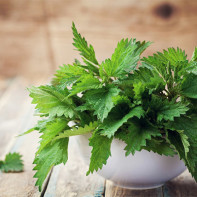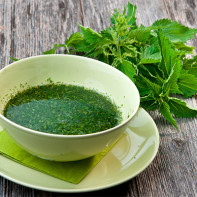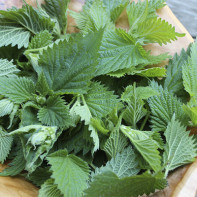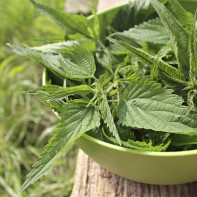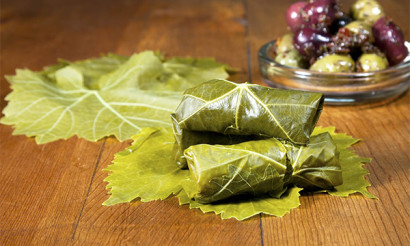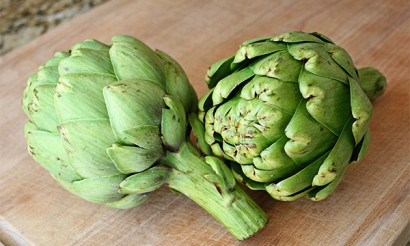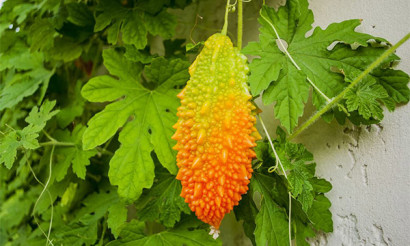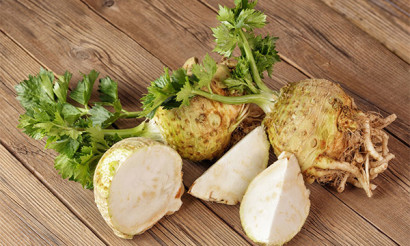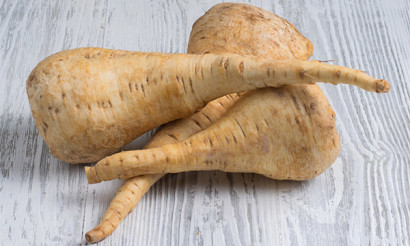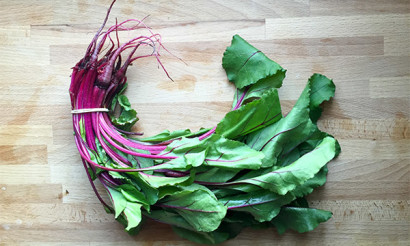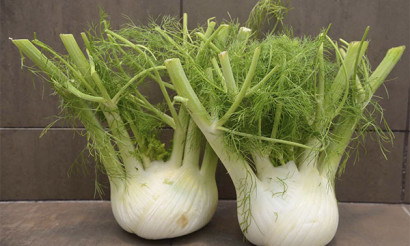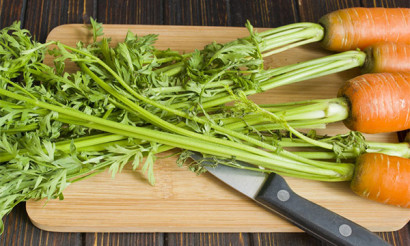Nettle: benefits and harm to the human body
In Europe, this grass is respected - it is even specially grown, especially in the north, where dioecious nettle does not grow under natural conditions or grows very poorly.
- Where does nettle grow
- Views
- Why is nettle burning
- How to distinguish dioecious nettle from stinging nettle
- Composition and calorie content
- Useful properties of nettle
- For women
- For men
- During pregnancy
- When breastfeeding
- For children
- When losing weight
- The benefits of dried nettle
- Nettle tea: benefits and harms
- Nettle in medicine
- With diabetes
- With pancreatitis
- With gastritis
- For the intestines
- For constipation
- With gout
- With colitis
- For the liver
- With hemorrhoids
- With cholecystitis
- Nettle-based traditional medicine recipes
- With rheumatism
- Radiculitis compress
- Blood tincture
- To improve kidney function
- To accelerate the healing of wounds, burns and frostbite
- With gout
- Nettle in cosmetology
- For face
- For hair
- Harm and contraindications
- How to collect and store nettles
- What can be cooked from nettles: recipes
- Soup
- Salad
- Can rabbits be given nettles
- Interesting Nettle Facts
Where does nettle grow
This burning grass with serrated leaves is, in essence, a weed that grows anywhere: in forest belts, in yards, in wastelands and kitchen gardens, in forests and fields. Stinging nettle feels rather well in Asian countries and in some parts of Siberia. Despite its unpretentiousness, a full-fledged plant can only form on well-moistened, rich in organic soil. Therefore, nettle is so often found along rivers and in forests.
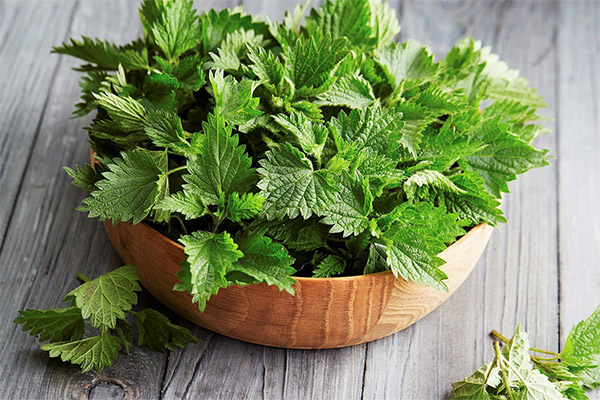
During flowering, the plant forms small white flowers. Fruits nettle with small "nuts" of yellowish color. The height of the bushes is, on average, no more than half a meter.
Views
The main varieties:
- Dioecious (found on the territory of the Russian Federation in forest-steppe / steppe zones).
- Narrow-leaved (place of growth - Korea, Mongolia, China).
- Burning (Germany, Poland, the territory of the Russian Federation).
- Kiev (place of distribution - Poland, Italy, Palestine, etc.).
- Flat-leafed (where it occurs - the east of Russia, Japan, China).
- Hemp (place of growth - Central Asia, the territory of the Russian Federation, China, Mongolia).
Today, many species and varieties of nettle are known - more than 50 in total. Two of the most common species are:
Dioica nettle
It is also called nettle. The people called this plant "stingy" or "zhigalka". The dioecious variety of grass is distinguished by a straight strong trunk, which grows up to one and a half meters. The average height of the dioecious nettle is less than one meter. The plant has large heart-shaped leaves with teeth along the edges. Inflorescences are spikelets. Nettle “burns” the skin with small, barely noticeable hairs that are located on the surface of the leaves and stem. This variety is called dioecious, because male and female inflorescences grow on different bushes.
Stinging nettle
This species is small in size - its stem, as a rule, does not grow above half a meter. The leaf of stinging nettle is compact, with a diameter of not more than 5 cm, has the shape of an oval or ellipse. Nettle got its name quite deservedly - it burns quite sensitively due to the many hairs-stings.
Why is nettle burning
The unusual property of instantly “burning” the skin when touched is just a way of protecting against eating herbivores, which, by the way, the plants are well aware of this feature and bypass it. Many probably noticed that the stems and leaves are literally strewn with barely noticeable thin villi that easily pierce the top layer of the skin of a person or animal. The tip of the “sting” breaks off during the injection and remains below the surface of the skin along with the annoying “cocktail”. It contains formic acid, vitamin B4 and histamine, which causes local irritation.
The liquid contained in stingers of nettles is a weak poison that does not pose a threat to humans. Quite the contrary, its effect on the body is beneficial, as it enhances blood circulation, which allows you to actively get rid of harmful substances. For this reason, nettle brooms are sometimes used in bathhouses.
A strong allergic reaction in contact with burning leaves - redness and burning - can indicate a weakened immune system and that the body has a lack of vitamins. However, nettle burn in any case does not pose any danger, and, as a rule, completely disappears after a few hours. A slight itching may persist for some time, after which it completely disappears.
There are several proven ways to quickly get rid of the unpleasant symptoms of a "bite" of a nettle bush:
- Wash the affected area with a solution of laundry soap.
- Combine soda with cold water and apply gruel on the surface of the skin.
- Attach a fresh leaf of sorrel so that it neutralizes formic acid that has fallen on the skin.
- Treat the affected area with aloe juice.
Very rarely, but still there are severe allergic reactions to nettle venom, even several cases of death are known. A strong allergic reaction to nettles is expressed in a severe rash, swelling at the touch, and even vomiting, diarrhea, fever. In such cases, you must call an ambulance.
How to distinguish dioecious nettle from stinging nettle
To do this is quite simple despite the fact that both species very often grow close by and even interspersed. Stinging nettle - a miniature plant, about half a meter high, usually does not form thickets, grows by single bushes or small groups. The leaves of the plant are very small, oval-serrate.
Stinging nettle is the first, its most noticeable difference from stinging nettles. Inflorescences are quite long, much longer than the leaf petiole. The sheet itself has an elongated, elongated shape. This plant very often forms dense impenetrable thickets.
Composition and calorie content
On the territory of the Russian Federation, nettle has long been considered an ordinary weed, since it grows almost everywhere. Despite this, the plant is very rich in vitamins and trace elements necessary for the human body. So, nettle is richer in vitamin C than any citrus and blackcurrant. In terms of carotene content, greens confidently “overtake” carrots, sorrel and sea buckthorn. If the body feels a lack of vitamin A, from a total of 20 g of nettle leaves, you can get its daily rate. Nettle also has vitamins K, E and a whole arsenal of useful trace elements:
- flavonoids;
- tannins;
- tannins;
- magnesium;
- iron;
- calcium;
- copper;
- organic acids (formic acid);
- glycosides;
- chlorophyll;
- volatile production.
Calorie content of 100 g of dioecious nettle is 33 kcal.
Useful properties of nettle
Note! The plant is used as a raw material for the manufacture of medicines in its entirety - from the roots to the ends of the leaves. Collect leaves from the beginning of summer to the beginning of autumn. This should only be done in dry and clear weather, when there is no dew on the plant. Collect nettles in tight gloves. If you need to prepare a large quantity, then use garden shears, a scythe or sickle.
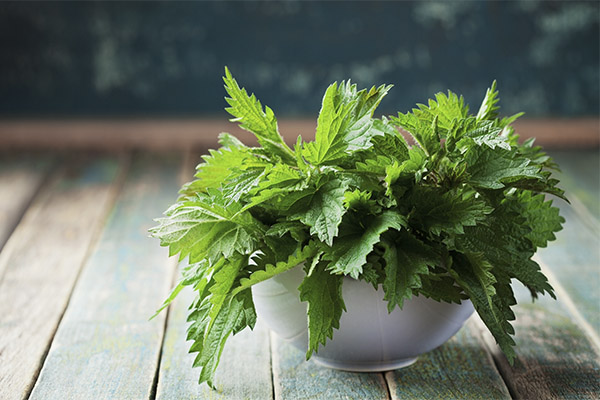
For women
- Most often, women wash their hair with a nettle broth in order to improve the overall health of the skin, get rid of dandruff and strengthen hair. Due to the effects of chlorophyll, washing the head with a decoction of this plant helps with diseases such as seborrhea, focal or nesting baldness. To prepare one portion of the broth, you will need 100 g of fresh raw materials, which are boiled in 1 liter of vinegar solution (water and vinegar are usually taken in a ratio of 1: 1). Treatment usually takes 1 month, followed by a break for several weeks, then the course is completely repeated.
- It is useful for women to regularly drink fresh nettle juice, which helps against internal bleeding. Take one teaspoon from 3 to 5 times a day. If the menstruation is too strong, it is recommended to take it in combination with drugs (only after consulting a doctor). Drink heavily diluted fresh juice (a teaspoon for a quarter of a full glass of water). Juice in this case is usually prepared directly from the leaves, which are collected during the flowering period of the nettle.
- Decoction for any person is useful to take with obesity. For its preparation, one large spoonful of finely chopped leaves is poured with about 250-300 ml of water. The broth should be drunk several times a day for half an hour before eating 1 tsp.
- With menopause, the decoction is able to lower the frequency of hot flashes, as well as partially remove strong sweating. In some female diseases, a freshly prepared infusion of nettle and chamomile flowers is used directly for douching. According to an old recipe, 1 tablespoon is taken for its preparation. carefully chopped burning leaves and as many chamomile flowers, pour half a liter of boiling water, let it brew for half an hour or an hour. Before you engage in self-medication, you should definitely consult a doctor!
For men
Nettle seeds, which can increase and strengthen male strength, are very useful. A few simple recipes:
- It is useful to brew one teaspoon of seeds as tea and drink an hour before meals.
- To enhance sex drive, seeds should be mixed in equal parts with honey and homemade wine. Take one tablespoon of the mixture before meals 2-3 times a day.
- The roots of the plant also increase male libido. They should be thoroughly washed, dried and chopped as finely as possible. After this, 4 teaspoons of raw materials need to be poured into 1 liter of vodka, let it brew for at least 3 weeks, after which the infusion should be taken 15–20 drops before meals.
- A decoction cooked according to a simple recipe from 1 tablespoon of nettle and 1 liter of water will help improve the condition of the male genitourinary system. The drug should be infused for about half an hour, after which it should be taken orally for 100–150 g. Nettle broth helps with premature ejaculation and prostatitis (as an adjuvant!).
During pregnancy
Nettles, as a rule, are consumed exclusively in the later stages of bearing a baby. In this case, leaves and roots are used.
The important properties of nettle for expectant mothers are as follows:
- Helps reduce cholesterol, helps with flatulence.
- It activates the digestion process, speeds up the metabolism.
- It has a pronounced anti-inflammatory effect.
- Improves appetite.
- Raises hemoglobin, is often used as an adjunct in anemia.
Since the broth contains B vitamins, organic acids, phosphorus, as well as potassium, sodium, copper, it is recommended to drink it during pregnancy as tea. To improve the taste and effect of the drink, you can mix burning leaves, mint and raspberries in identical proportions. For a decoction, it is enough to use two tablespoons of the herbal mixture per one liter of water. You can add a little sugar, lemon juice or ginger to taste in freshly brewed nettle “tea” to improve the palatability.
When breastfeeding
In some cases, nettle broth is quite capable of helping with problems with lactation. However, any medications, including herbal decoctions, should be taken with great care and only after consulting a doctor.
During the GW period, nettle is used in different forms. Most often these are dry leaves from a pharmacy. Sometimes young mothers like fresh nettle leaf soup. Such a healing potion can bring much more benefits than dried leaves, as it contains many vitamins and minerals that need to be replenished after childbirth.
However, during the period of feeding, this product should not be abused, therefore it should be taken moderately and carefully.
For children
For children, the benefits of nettle are obvious not only for educational purposes. Since the plant has a lot of ascorbic acid, in other words, vitamin C, various decoctions and infusions from nettle well enhance children's immunity. This allows you to reduce the frequency of seasonal colds, improve the absorption of iron, which is necessary to ensure the required level of hemoglobin.
The use of nettle broth allows you to reduce the sugar level in the child’s body without the use of drugs that may have undesirable side effects. The leaves contain a lot of potassium and fiber, which positively affect the intestines and help him get rid of undigested food debris.
The positive effect of nettle on children aged 2 years and older is also due to the presence of histamines in the plant. They are able to block allergic reactions and purify the blood. Experienced specialists in the field of herbal medicine recommend a nettle decoction in the treatment of autoimmune diseases in children, but this should be done with great care - exclusively under the supervision of a doctor.
When losing weight
When fighting overweight, young nettles are especially useful. Due to its pronounced diuretic properties, this plant will help to quickly remove excess fluid from the body (which is extremely important for everyone losing weight), thus relieving it of edema and extra pounds. For many, the cause of weight gain is banal intestinal dysfunction and a tendency to the rapid accumulation of various kinds of toxins and toxins - in this case, a nettle broth is especially indicated. A natural drink will help not only to reduce weight, but also to normalize the digestive tract in the shortest possible time.
In addition, this plant helps to significantly reduce appetite. So, in the broth contains substances that inhibit receptors that cause a feeling of hunger. Nettle also has a mild sedative effect, which helps reduce stress and fight the habit of "seizing" a bad mood.
Thus, regular intake of nettle decoctions / tinctures can help the body gently and gradually lose weight.
The benefits of dried nettle
Useful substances such as carotene and protein are completely stored in dry nettles. With proper drying, it retains most of the trace elements and vitamins contained in it.
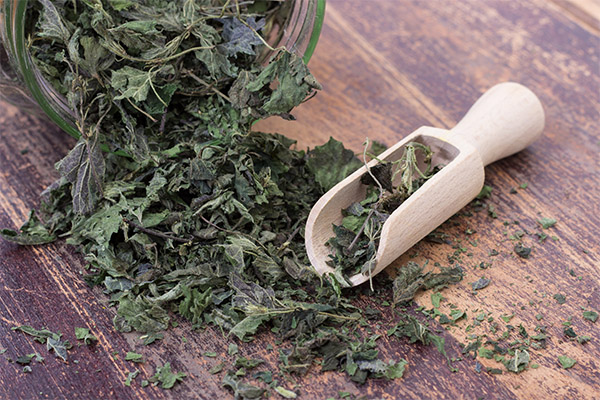
Useful properties of dried leaves:
- help stop inflammation;
- improve blood coagulability, normalize carbohydrate metabolism;
- increase immunity;
- possess anticonvulsant, diuretic effect.
This is not a complete list of the beneficial properties of dried nettle.
Nettle tea: benefits and harms
Nettle tea is good for people who have problems with the digestive tract, liver and respiratory system. It is also recommended to take it for rheumatism, an ailment such as gout and gall bladder diseases.
However, nettle tea may not always be beneficial. It can not be taken if a person suffers from cardiovascular diseases, since nettle contains substances that thicken the blood. Nettle tea is also contraindicated in case of renal failure and in such cases as:
- bleeding caused by the presence of tumors, polyps or parasites;
- increased blood coagulation;
- kidney disease.
In any case, nettle tea should not be abused, especially in extreme heat, when the body quickly loses water.
Nettle in medicine
This plant, which is considered to be a weed in the territory of our country, is widely used in the medical industry for the treatment of many diseases: rheumatism, hemorrhoids, pathologies of the digestive tract, respiratory organs, etc. As medicinal raw materials, leaves, roots and fruits of the plant are used.
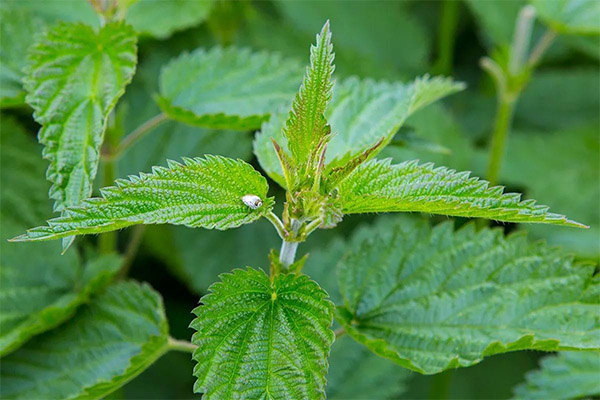
With diabetes
At an early stage of the disease and in mild forms of diabetes, taking nettles brings a tangible effect.For treatment, a decoction or leaves in a fresh and canned form is used. Very often, this plant is introduced into the diet of patients with severe forms of diabetes, as it contains a large arsenal of vitamins and minerals that help strengthen the body and cleanse the blood. Children and adults suffering from this ailment are recommended to take 2 tablespoons of the decoction per day.
With pancreatitis
Nettle intake is not prohibited in either acute or chronic pancreatitis. However, with an acute disease, taking nettles is not recommended, since it will not be possible to achieve any effect from therapy at this stage with its help.
As for chronic pancreatitis during periods of remission, the use of nettle is not only permissible, but also recommended as part of the diet. The use of broths in this case should be agreed with the attending physician.
With gastritis
Nettle as a therapeutic agent is recommended for many diseases of the gastrointestinal tract, including gastritis. With an exacerbation of the disease, you can use the following prescription composition: mix in equal proportions burning leaves and baskets of chamomile, add perforated St. John's wort and leaves of ordinary plantain. Pour this herbal mixture with a liter of boiling water per 1 liter of hot water per 4 tbsp. mixtures of herbs. Take one glass three times a day for 1.5 weeks.
There is also another similar recipe that is suitable for therapy for chronic gastritis: mix finely chopped nettle leaves with St. John's wort in equal proportions, add a spoonful of viburnum leaves and golden golden grass.
For the intestines
Since nettle is very rich in fiber, it is recommended to take it for diseases of the digestive tract. Its fibers are not digested in the stomach and, passing through the intestines, work like a brush. Regular intake of decoctions or tinctures allows a good detoxification of the body, get rid of accumulated toxins, salts of heavy metals and all kinds of poisons. Nettle is able to restore and activate intestinal motility, and also prevents fermentation of food debris.
For constipation
From periodic constipation, as well as from pain in the stomach, the following recipe will help: 1 tablespoon of crushed raw materials pour 200 ml of boiling water, leave for 30 minutes. It is imperative to strain the ready-made broth through gauze or a fine sieve, after which, on a regular basis, take half a cup 2 times a day immediately before meals. It is impossible to take medicine for a long time, as traditional healers say, since nettle tends to increase blood coagulation with prolonged use. The stool should gradually normalize, and the pain in the stomach, accordingly, will stop.
With gout
As studies have shown, nettle contains a rather impressive amount of nutrients that have a beneficial effect on the whole body. Nettle juice can be used to relieve gout attacks and as a preventative measure. It is obtained from fresh, well-washed leaves. With gout, juice is taken for 1 tsp. three times a day.
With colitis
For patients with chronic colitis, the following prescription is recommended: in equal proportions mix burning leaves, peppermint, ordinary pharmacy chamomile and dried blueberries. Exactly 3 tablespoons pour the mixture with 3 cups of prepared boiling water and then insist for at least 4–5 hours in a thermos or in a saucepan with a lid wrapped in a blanket. Then strain and squeeze the raw materials. Ready to take the infusion warm one cup a day for half an hour before eating.
For the liver
In order to improve the work of this body, disturbed by improper nutrition for a long time or by taking alcoholic beverages, you can use such a healing broth: 2 tbsp. pour raw materials 0.5 l of water, then bring to a boil. Then it is advisable to rotate the composition for about another 5 minutes. After this, the finished broth is filtered through gauze or a colander, add no more than 1 tbsp.honey. Folk doctors recommend taking the finished medicine warm 3-4 times a day, not more than 100 ml.
With hemorrhoids
In order to treat this unpleasant disease, nettle can be used both internally and externally. For internal use, natural teas, infusions, microclysters are usually prepared at home. For outdoor use, as a rule, baths, lotions and special compresses from nettles.
To prepare the infusion, pour 10 g of dry nettle leaf in a cup of boiling water, then insist for at least half an hour. When ready, take the infusion one quarter cup three times a day before meals. The same infusion can be used for baths and lotions.
With cholecystitis
People who have long suffered from ailments of the gallbladder will help this recipe. It is recommended to take a decoction made from the roots of a dioecious plant. For its preparation, 2 tbsp. chopped root pour a mug of boiling water, then boil the composition for a minute over low heat. Further, without fail, let the broth brew for 1 hour. Ready-made folk remedies should be taken 3-4 times a day before meals, a quarter cup.
Nettle-based traditional medicine recipes
With rheumatism
Fresh, preferably young nettles are first thoroughly washed, scalded with boiling water or allowed to wither, finely cut and squeezed in any way possible. The resulting juice is not stored for long - in a cool dark place for no more than 3 days. Take orally 1 tbsp. before eating.
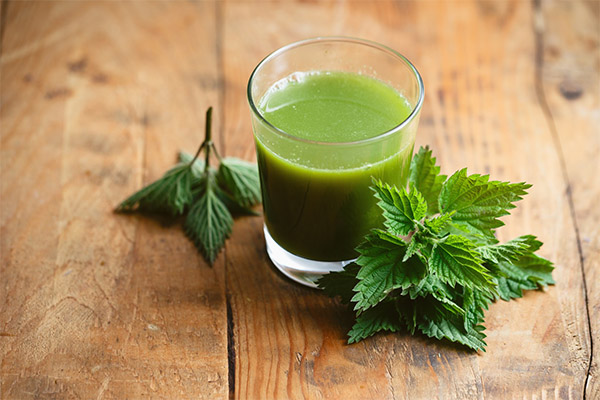
Radiculitis compress
According to this prescription composition, absolutely any nettle is suitable for the medicine. Used tincture or scalded with boiling water fresh, just ripped raw materials. To get the infusion, 2 tablespoons of chopped herb leaves are steamed in a mug of boiling water, wrapped harder and just put in the warmest place in the house for half an hour. After that, it is mandatory to filter, infuse with an infusion a piece of tissue, which is applied to the sore spot. Compresses are recommended to be done regularly, namely at least 2 times a day and kept for 1.5–2 hours each.
Blood tincture
4 tablespoons of dry foliage pour a cup of boiling water. The composition is heated for 10 minutes over low heat, then the healing agent is allowed to infuse for 30 minutes. Take according to the instructions for half a cup three times a day before meals.
To improve kidney function
Pour 2 tbsp. dried leaves with a glass of boiling water (200 ml), keep on low heat for 10-15 minutes. Take half a cup inside with a bite of honey 3 times a day before meals.
To accelerate the healing of wounds, burns and frostbite
Dry raw materials are crushed into powder, sieved. The resulting powder is sprinkled with affected areas from 1 to 3 times a day. Powder sprinkle wounds under a bandage or dispense with it.
With gout
Nettle as a part of the collection (at least 40%) is better. A mixture of nettle, oregano, birch leaves pour 0.5 liters of boiling water. Insist at least 1 hour (preferably two). Take orally no more than 100 ml 4 times a day for 1.5–2 months.
Nettle in cosmetology
This plant has been used by people for many centuries, not only in medicine, but also to care for appearance. It is especially good for hair. Many old recipes have survived to this day. The healing properties that are due to the presence of a large amount of chlorophyll in the plant are actively used by the modern perfume industry today. Thus, now, on the basis of nettle extracts, a huge variety of shampoos, lotions, tonics, creams, soaps, etc. are produced.

Nettle has a pronounced deodorizing effect on the skin due to the presence of phytoncides in its composition. A rich set of vitamins and minerals beneficially affects the skin, hair and the body as a whole.
Juice and leaves are widely used by cosmetologists to strengthen hair follicles, with baldness, to get rid of dandruff, early gray hair and greasy hair. It should be borne in mind that the use of nettle is permissible only for oily hair.In addition, some concentrates based on it can dye blond hair.
For face
A true storehouse of vitamins is young nettle, which sprouts in early spring. She is considered one of the best skin care products for problem skin. Almost all trace elements and vitamins contained in its composition have antiseptic, bactericidal and anti-inflammatory properties:
- Vitamin A helps cure acne and acne.
- Vitamin C helps to heal wounds on the skin, makes it elastic, strengthens the walls of capillaries and blood vessels.
- Vitamin K successfully fights against edema and freckles.
- Carotene moisturizes dry skin, makes it shiny and radiant.
- Tannins reduce inflammation and smooth wrinkles.
- Flavonoids have a rejuvenating effect.
- Organic acids even out skin tone.
- Potassium maintains the required percentage of hydration.
Nettle, possessing such a wide spectrum of action, is an excellent cosmetic product - natural, homemade and practically without contraindications.
For hair
With the help of this plant, you can get rid of a number of troubles with hair:
- Thanks to the burning properties of the plant (which are almost not felt when applied), the growth and density of the hair improves, blood circulation is normalized, the scalp receives more nutrients and oxygen.
- To eliminate premature gray hair, a decoction of nettle leaves is used.
- A decoction is also useful for eliminating dandruff and preventing its occurrence. It relieves irritation, dryness, regulates the level of oily skin.
Harm and contraindications
Despite the many useful properties of nettle, improper and thoughtless use of it can cause significant harm to the body. When treating, you need to take the process very seriously, do not forget to consult a doctor, since nettle, like many other medicinal plants, has a lot of contraindications and features:
- It greatly affects the density and coagulability of the blood, so it can not be used by people with high blood pressure, hypertension, patients with atherosclerosis.
- Nettle-based medications are not recommended for people with varicose veins and thrombophlebitis.
- You can not take formulations prepared on the basis of this plant for kidney diseases of any kind.
- It is not recommended even in small quantities to take a decoction of nettle leaves in early pregnancy, as it can stimulate uterine contractions.
- You can not take the composition of nettles for malignant tumors of any kind.
The thoughtless use of even traditional medicines can bring harm and complications instead of the expected recovery.
How to collect and store nettles
Any medicinal plant must be collected at a certain time, when it contains the maximum amount of nutrients. Nettle is no exception. Before proceeding to the collection, you need to prepare theoretically, find out which parts you can assemble and when.
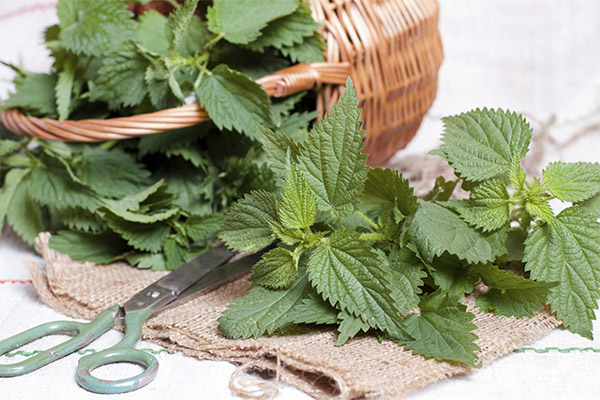
Of the aerial parts, the most valuable material is the leaves of the plant. It is not difficult to collect them, and in a short time you can prepare a large amount of raw materials. If you need to stock up directly with the roots, you should give preference to strong and strong plants with large leaves and thick shoots. Such bushes have a large root system.
The maximum concentration of nutrients is observed in plants in early spring, namely during the period of bud swelling, and also after the seeds have ripened. Thus, it makes sense to harvest nettle roots in early spring and autumn. You can do this in any weather, digging the roots with a shovel.Accordingly, the dug roots need to be thoroughly washed.
Experienced herbalists, as you know, harvest their roots in late September, that is, when the aboveground part is still alive, and the plant is easy to detect in the thickets. This harvesting time is also good because the nettle has already managed to shed seeds, so when digging up the roots they fall into the ground.
As mentioned above, the entire aerial part of the nettle is extremely rich in useful substances. The collection for the treatment and strengthening of hair is most advisable to carry out during the flowering period of the plant - from June to August. At this time, the leaves are mainly harvested. If you collect the leaves later, they will be tough, their lower plates will fade and dry.
Note! The top of the plant is best cut in the morning after the dew has dried. The plant still has to be dried, and excess moisture is not appropriate here.
Nettle loves a good fertile soil with high humidity. It can be a place in the garden, along the banks of rivers and ponds, the plant is often found on the edge of the forest, on vacant lots and in ravines. However, despite the widespread prevalence of the plant, it can be collected far from everywhere. For example, it is strictly forbidden to take raw materials near busy motorways and railways, since in such places the plant accumulates dust and toxic substances contained in abundance in exhaust gases. Nettles taken in such places can actually do a lot of harm.
You should not take plants from sites bordering city landfills and industrial enterprises, construction sites, etc. Using infusions and medicines from plants taken in such places, you can not only not cure old diseases, but also acquire new ones.
If the grass is harvested for drying, the stems are cut with a knife or sickle. After this, the cut green mass is allowed to lie down for several hours. After this time, the plant loses its stinging properties, so picking leaves will be safe. For collection, it is better to choose not lonely bushes, but overgrown, then in one day you can harvest up to 50 kg of leaves.
Before collecting plants, you need to make sure of their quality and the absence of infections. Nettle is very fond of butterfly hives. It does not harm the plant itself, but leaves the products of its vital activity on the leaves, making them unfit for consumption. Do not take nettles, which are entangled in cobwebs or have yellowed shoots.
When harvesting the roots, after they are dug up, the remaining soil should be shaken off, then the raw materials should be thoroughly washed. After that, cut off the remains of the stems with a knife. You can not rinse the roots with hot water, since in this case some of the nutrients will be lost.
An equally important point is the storage of the finished dried material. For this purpose, a dry room is necessary. Dry material is stored in containers or bags of paper or fabric. The container must be signed, indicating the name of the plant and the date of collection.
What can be cooked from nettles: recipes
In addition to cosmetology and medicine, nettle is also used in cooking. It is added to salads, soups and seasonings. This is not surprising, because nettle is not only useful, but also tasty.
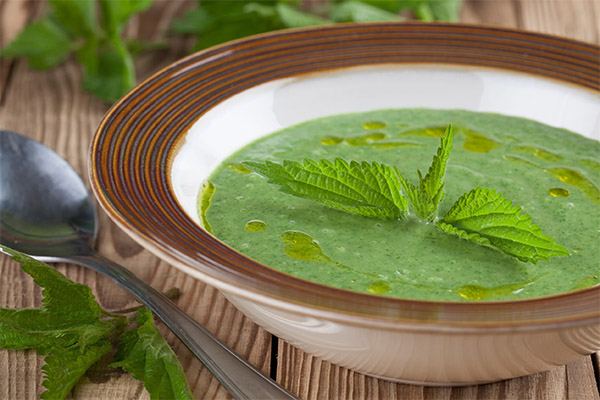
Soup
To make nettle soup you will need these products:
- Chicken - approximately 1 kg.
- Young nettle - 300-400 g.
- 3-4 potatoes.
- 3 onions, 1 carrot.
- 1-2 cloves of garlic.
- 1 egg
- Ghee.
- Salt pepper.
Meat is cut from chicken carcasses, minced meat is made from it, garlic and half a potato are added. Add the egg, pepper and salt to the minced meat, knead to the desired consistency. After that, meatballs are formed from minced meat. They are laid out on parchment and sent briefly to the refrigerator.
The remains of the chicken are placed in a separate pan, pour water, bring to a boil, salt, remove the foam.Add the unpeeled onion, chopped in half, and carrots into the broth, simmer for 1.5 hours. After this, the broth is filtered through a sieve. All that remains in the sieve will no longer be useful, you can throw it away.
Nettle is cut, hard stems are thrown away. The remaining potatoes and onions are peeled, after which the onions are cut very finely, and the potatoes are made into medium-sized cubes.
Butter is melted in a tank with a thick bottom. Onion is fried in oil until golden brown, after which potatoes are added, and fried for about 5 more minutes. Add half the broth, boil, and then simmer over low heat for about 10 minutes.
The remaining broth is poured into another pan, salt is added to taste, meatballs are cooked for about 10 minutes. After that, everything is poured into one pan. Before serving soup to the table, put a small piece of butter on each plate.
Salad
To make a salad you will need the following ingredients:
- 100 g of young nettle.
- 3 boiled eggs.
- 3 tablespoons of sour cream.
- 1 clove of garlic.
- Small bunch of parsley
Cooking a salad according to this recipe will take no more than 10 minutes.
Fresh nettle is poured with boiling water, wait a few minutes, no more. After this, the boiling water is drained, the pre-cooked eggs are cleaned and finely chopped. The nettles are chopped, parsley and garlic are chopped, and all this is added to the salad bowl. The dish is seasoned with sour cream or any vegetable oil, salt is added to taste.
Can rabbits be given nettles
If it is properly assembled and processed, it will only benefit the eared pets. Young nettle is not only one of the first green foods in the spring, it is simply an excellent source of vitamins and proteins, which rabbits need so much for growth and development. In this regard, nettles easily compete with such feeds as alfalfa and clover.
Young nettle is very useful for lactating queens - it helps to increase the amount of milk. It is also given to young rabbits for starting growth, especially meat breeds.
Rabbits can be fed with both fresh and dried nettles. In order for the animals to get all the necessary nutrients from it, you need to know several rules for its procurement.
- The best time to collect nettle for food is before flowering, until the stems and leaves become stiff. Nettle should not be given to animals immediately after collection - fresh plants, well warmed up by the sun, can begin to ferment in the intestines, which will lead to dysbiosis. Raw materials need to be dried for a while in the shade, this, among other things, will relieve the plant from burning.
- Once the grass is soft enough, it can be given to rabbits as a separate feed or mixed with bran or boiled mashed potatoes. In this case, it is necessary to strictly observe the measure and not give a lot of grass in the first days of the transition to seasonal food. This is necessary so that the rabbits get used to the green leaves and shoots that they did not eat in the winter.
Interesting Nettle Facts
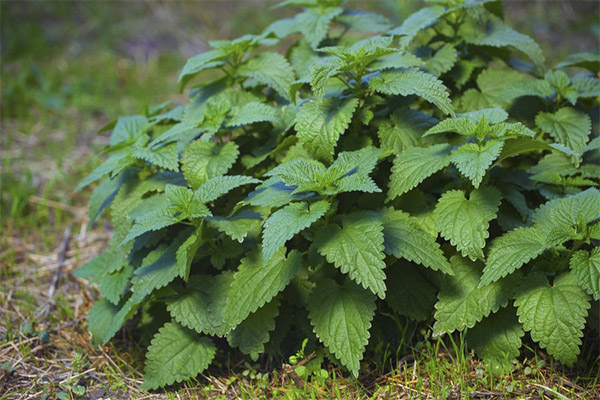
- Nettle is a favorite delicacy and the only food for several types of butterflies.
- Stinging villi contain organic formic acid, which causes skin burning.
- High-quality strong sails were previously made from a cloth woven from nettle fiber.
- The nettle family includes more than a thousand species, mostly tropical.
- From a medical and culinary point of view, the leaves are most valuable. Most vitamins and valuable minerals, tannins and protein compounds are concentrated in them.
- The food industry produces a completely harmless green dye from this plant.
- Nettle is added to shampoos, as it strengthens hair perfectly. It is very useful to rinse a nettle broth with hair, it does not need to be washed off.
- The British make wine from nettles. Moreover, to get 3000 liters of the drink you need only 40 kg of raw materials.
- Some tropical species of nettle sting very painfully, and from the "bite" of several species you can die.
- For more than 20 years, a championship has been held in the English village of Marshwood, the meaning of which is to eat as much nettle as possible. The tradition has appeared since two local residents argued who could eat more nettle leaves.
- From nettles you can get high-quality fabric, reminiscent of flax in its properties. During World War II, uniform for German soldiers was sewn from such fabric.
«Important: all information on the site is provided exclusively in fact-finding purposes. Before applying any recommendations, consult with a profile specialist. Neither the editors nor the authors are liable for any possible harm caused materials. "

